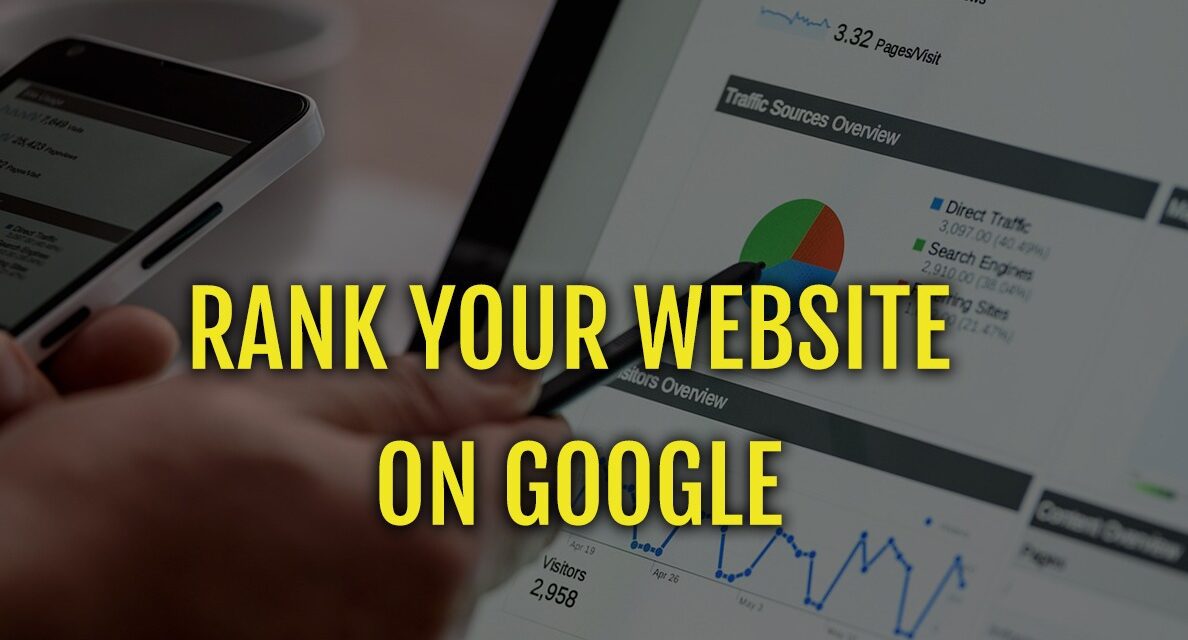How Rank Website on Google as the world’s most popular search engine, Google plays a critical role in determining the success of websites. Achieving a high-ranking position on Google’s search results can significantly increase your website’s visibility, organic traffic, and potential for success. However, with millions of websites vying for attention, it’s essential to implement effective strategies to stand out from the crowd. In this comprehensive guide, we’ll explore the key steps to help you rank your website on Google.
1. High-Quality Content is King:
Google places a strong emphasis on providing its users with valuable, relevant, and high-quality content. Your first priority should be to create compelling, informative, and well-structured content that addresses your target audience’s needs and queries. Aim to become an authority in your niche, offering unique insights and solutions to common problems. Engaging content attracts more visitors, encourages longer time spent on your site, and increases the likelihood of getting linked by other reputable websites, all of which are factors Google considers for ranking.
2. Keyword Research:
Identify relevant keywords and phrases that potential visitors are likely to use when searching for content related to your website. Several tools can help with keyword research, such as Google’s Keyword Planner, SEMrush, or Ahrefs. Optimize your content with these keywords naturally, ensuring they fit naturally within the text and not overused (keyword stuffing can hurt your rankings). Consider long-tail keywords as they often have less competition and can target specific user intent more precisely.
3. On-Page Optimization:
On-page SEO involves optimizing elements directly on your website to improve its search engine visibility. Key on-page elements to focus on include:
Title Tags and Meta Descriptions: Craft compelling and relevant titles and meta descriptions for each page, incorporating targeted keywords.
URL Structure: Keep your URLs simple, descriptive, and include relevant keywords where appropriate.
Headings and Subheadings: Organize your content with clear heading tags (H1, H2, H3) to improve readability and keyword optimization.
Image Optimization: Use descriptive file names and add alt tags to images, making them more accessible to search engines.
Internal Linking: Link relevant pages within your website to create a hierarchical structure and improve navigation.

4. Mobile-Friendliness:
With the majority of internet users accessing the web through mobile devices, having a mobile-friendly website is crucial. Google prioritizes mobile-friendly websites in its rankings. Ensure your site’s design is responsive and adapts to different screen sizes. Google’s Mobile-Friendly Test tool can help you identify and fix issues related to mobile usability.
5. Page Speed:
Page loading speed is an essential factor in Google’s ranking algorithm. Optimizing your website’s performance is critical for both user experience and search engine rankings. Compress images, enable browser caching, minify CSS and JavaScript files, and consider using Content Delivery Networks (CDNs) to speed up page loading times.
6. Backlinks:
Backlinks, also known as inbound links, are links from other websites pointing to your site. Google considers backlinks as a vote of confidence and authority. Focus on acquiring high-quality backlinks from reputable and relevant sources. Avoid black hat techniques or buying links, as they can lead to severe penalties from Google.
7. Social Media Presence:
While social media signals may not have a direct impact on Google rankings, a strong social media presence can indirectly influence your website’s visibility. Engaging content that gets shared on social media can attract more visitors to your site, potentially leading to more backlinks and increased brand awareness.

8. Regularly Update and Expand Content:
Google loves fresh and up-to-date content. Regularly update your website with new blog posts, articles, or other forms of content. Additionally, consider expanding and improving existing content to ensure it stays relevant and provides the most value to your audience.
9. Monitor Performance and Adapt:
Use Google Analytics and Google Search Console to monitor your website’s performance and track key metrics such as organic traffic, bounce rates, and keyword rankings. Analyze the data regularly and make informed decisions based on the insights you gather. SEO is an ongoing process, so be prepared to adapt your strategies as needed.
Remember, How Rank Website on Google takes time and effort. There are no shortcuts or guaranteed overnight successes. By consistently following these best practices and focusing on creating an excellent user experience, you can improve your website’s visibility, attract more organic traffic, and ultimately achieve higher rankings on Google’s search results page





